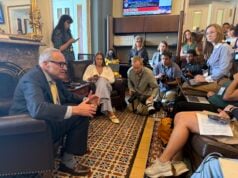
A new TIAA survey shows that, for most Americans, the concept of retiring at 65 is becoming increasingly unrealistic. Just 37% now believe it’s possible to retire “on time” — meaning between the ages of 65 and 70 — while nearly two-thirds of adults expect to work well past the traditional retirement age. Some even plan to keep working until they physically can’t.
Retirement today looks very different than it did four decades ago. In the 1980s, pensions were common, housing was cheaper and leaving the workforce at 65 was realistic for many. Today, pensions have largely disappeared in favor of 401(k)s, and retirement planning has shifted from employers to individuals — many of whom feel unprepared.
The TIAA survey highlights a disconnect between Americans’ retirement aspirations and their financial habits. According to the report, one in five adults says they aren’t currently saving for retirement — and 5% admit they have no plans to start. In addition, nearly a quarter expect they’ll have to keep working, even in retirement, just to pay the bills.
Rising costs compound the challenge. Health care, housing and everyday expenses have climbed faster than wages for many workers, while Social Security’s cost-of-living adjustment, or COLA, often lags behind real inflation.
Nearly half of survey respondents say that they (44%) expect Social Security benefits to be their primary source of income in retirement, even as experts warn about the program’s long-term solvency. (Younger generations, in particular, doubt that the system will be able to support them decades from now.)
“Americans clearly want peace of mind in retirement, but the reality is that too many people either aren’t saving enough or aren’t confident in their ability to plan,” Kourtney Gibson, chief executive officer of retirement solutions at TIAA, says in the report. “We’re seeing the consequences of a system that has left millions without proper guidance.”
What’s holding workers back?
Why aren’t people saving more? Financial strain plays a big role — from debt and high housing costs to everyday living expenses. But for some, the issue isn’t just money; it’s strategy.
While many lack the knowledge to use available tools, others look to unconventional ways to fund their retirement. According to TIAA’s findings, one in 10 Americans actually thinks winning the lottery (which has only about a 1-in-300-million chance of happening) or investing in luxury handbags could actually help fund their retirement.
Despite the uncertainty, there are tools that could help. Nearly all respondents say they’re interested in having a guaranteed source of income (besides Social Security) to help cover everyday expenses.
While 64% would consider purchasing a financial product like an annuity — which pays you a set amount each month for the rest of your life — a quarter admit they don’t know enough to actually invest confidently.
The findings from TIAA’s latest survey suggest that, while many reasonably want financial stability in retirement, knowledge gaps and lack of resources continue to hold them back. Without better planning, guidance or resources, the dream of retiring at 65 may remain out of reach for millions of Americans.
Disclaimer
The information contained in South Florida Reporter is for general information purposes only.
The South Florida Reporter assumes no responsibility for errors or omissions in the contents of the Service.
In no event shall the South Florida Reporter be liable for any special, direct, indirect, consequential, or incidental damages or any damages whatsoever, whether in an action of contract, negligence or other tort, arising out of or in connection with the use of the Service or the contents of the Service. The Company reserves the right to make additions, deletions, or modifications to the contents of the Service at any time without prior notice.
The Company does not warrant that the Service is free of viruses or other harmful components












